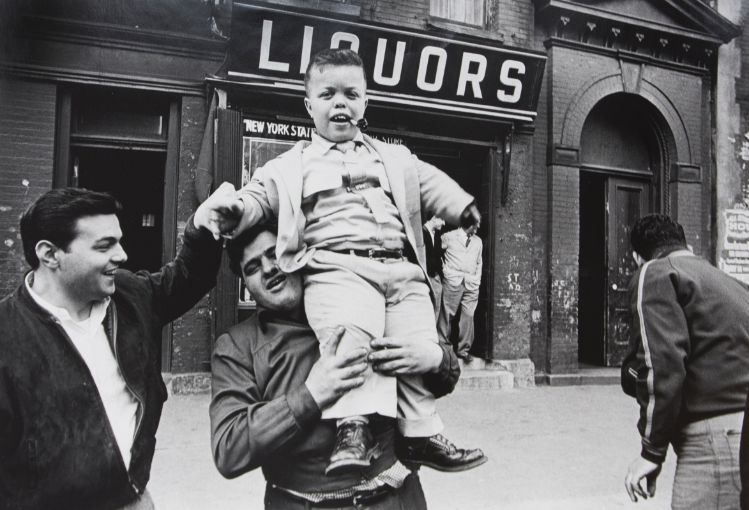
William Klein was born in New York City in 1928. He graduated from high school early and enrolled at the City College of New York at the age of 14 to study sociology. After City College, Klein enrolled in the Army and was stationed in Germany and later France, where he would permanently settle after being discharged.
In 1948, after discharge, Klein got a scholarship to the Sorbonne in Paris and started doing abstract painting and kinetic sculpture. He was taught by the French artist Fernand Leger. He didn’t talk arty-farty,” says Klein. “He would say, ‘That is cool, that is strong, keep it up.’ And that’s it. No fancy-schmancy art talk.” Leger told him: “Get out of the galleries. Look at buildings; go out onto the street.” It was at an exhibition of his sculpture that he met Alexander Liberman, the art director for Vogue, who convinced Klein that the best way to follow Leger’s advice was via photography. Despite having no formal training as a photographer, Liberman hired Klein as a fashion photographer for Vogue.



Klein won the Prix Nadar in 1957 for Life is Good and Good For You in New York, a book of photographs taken during a brief return to NYC in 1954. Klein’s work was considered revolutionary for its uncompromising rejection of the then prevailing rules of photography i.e. the mannered aesthetic of Cartier-Bresson. He was, in effect, the predecessor of Garry Winogrand.
Bruce Gilden’s work owes an obvious debt to Klein. Klein was the Cartier-Besson anti-hero: where HCB remained private and discrete, Klein enjoyed and encouraged confrontation and offense, and coupled his approach with a purposefully gritty style that he felt spoke to the reality of the New York street. “I didn’t relate to European photography. It was too poetic and anecdotal for me. The kinetic quality of New York, the kids, dirt, madness – I tried to find a photographic style that would come close to it. So I would be grainy and contrasted and black. I’d crop, blur, play with the negatives.” For Klein, Cartier-Bresson’s exactitude didn’t fit the realities of street life in New York. “I didn’t see clean technique as right for New York. I could imagine my pictures lying in the gutter like the New York Daily News.” Where Cartier-Bresson remained unobtrusive, Klein relished intrusiveness as a working method: I work on negative energy. If you get me mad in the street, I’m flinging my camera in your face.”


“

I love Klein’s photography – so animated and slightly dangerous. But I guess NYC was a slightly less dangerous place back then than it is now. Today, I don’t know if you could get away with this sort of thing.
Out of interest the BBC documentary on Klein is still online.
The Many Lives of William Klein (2012) link below;
https://vimeo.com/228999366
Very nice. Thank you.
https://zoowoman.website/wp/movies/qui-etes-vous-polly-maggoo/
Here’s a link to his mickey-take on the fashion world.
As you point out, Klein found ways to use the medium itself to carry his perspective. Moriyama is another obvious example. Maybe this use of the medium itself (even in less dramatic form), and not just the content of the photograph, is part of the route to authenticity as a photographer.
You are on the money, but bringing with that a huge problem: what be the situation of the photographer devoid of any particular point of view, but simply armed with the desire to take pictures?
I imagine, rightly or otherwise, that that’s the status quo of the vast majority of camera buffs.
Should they be barred, or do we ask only that they don’t subject us to their pix?
🙂
Lovely. I also remember this about Klein’s contact prints: https://www.youtube.com/watch?v=WFIm4FUFdww